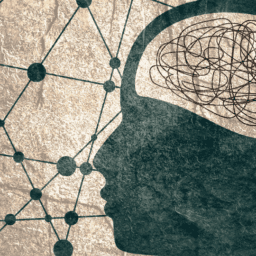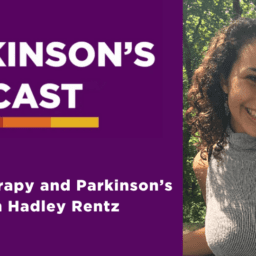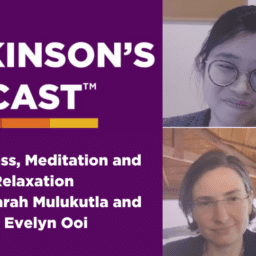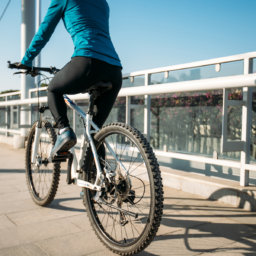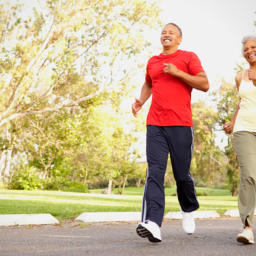Your brain and its many networks and pathways are constantly changing throughout your life. As you learn and experience new things, your brain adapts. New connections (or synapses) are formed. Your brain reorganizes itself. And research continues to show that this brain growth, development, and reorganization are not simply automatic processes but ones that can be encouraged and stimulated. For everyone, including people with Parkinson's, that offers much hope. In this post, we'll explore why neuroplasticity is of particular interest to the Parkinson's community, what it means, and how to promote it so you can boost your brain health and live well today and for many years to come.
What is neuroplasticity?
Neuroplasticity is the ability of networks and pathways in your brain to change, adapt, and form new connections. Neuroplasticity, sometimes called brain plasticity, can be structural or functional. Structural neuroplasticity refers to changes in the strength of the connections between neurons (nerve cells). Functional neuroplasticity refers to the permanent synapse changes due to learning, experience, and development.
How can the process of neuroplasticity help me live well with Parkinson's?
Neuroplasticity, a process beneficial to everyone, has great potential to help people with Parkinson's live well as their Parkinson's progresses. How? Because in addition to creating new connections in your brain, it also enables neurons to compensate for injury and disease. It helps explain why people with speech problems can sometimes sing to communicate or why people who have difficulty walking can sometimes dance or march with little problem.
To explore how neuroplasticity can help you live well with Parkinson's now and in the future, we first need to dig into some brain basics.
In Parkinson's, the part your brain impacted is called the basal ganglia. Part of your basal ganglia is the substantia nigra, which consists of two components—the pars compacta and the pars reticulata. The substantia nigra pars compacta (SNpc) comprises dopamine-producing neurons. These are the neurons that Parkinson's causes to degenerate, and the death of these neurons leads to declining dopamine levels. Declining dopamine levels impair the nigrostriatal pathway, which links the substantia nigra and the caudate and putamen (parts of the basal ganglia). And this results in the motor symptoms commonly associated with Parkinson's.
So, where does neuroplasticity come into the picture? Through it, your brain can compensate for damaged neurons—like those that produce dopamine in the SNpc—by reorganizing and forming new connections between undamaged neurons. In other words, your brain can disconnect old wires that are no longer functioning correctly and connect new wires to make different pathways.
Even more encouragingly, research shows that you can protect your residual nigrostriatal dopamine neurons—and perhaps even restore the dysfunctional cortico-basal ganglia motor control circuit. (In other words, you can take action to protect the neurons that you still have and, possibly, reverse some of the damage Parkinson's causes on your motor control circuit.) When your brain creates new and alternative brain pathways, you may be able to perform activities or tasks you have had trouble doing during your time with Parkinson's. This can help you stay independent for longer, and it can help you maintain a high quality of life as new symptoms emerge.
How can you encourage neuroplasticity?
While neuroplasticity happens automatically in response to learning and experience, you can encourage the process by taking action. For example, studies show that synaptic plasticity—the ability to make experience-dependent, long-lasting changes in the strength of neuronal connections—can be positively influenced by several things, including exercise (which studies have found to be most effective), your environment, learning and practicing new skills, and more.
Aerobic Exercise
Numerous research studies, some in animal and some in human models, have shown the potential benefits of physical exercise on brain function and neuroplasticity. This is also the area most researched regarding Parkinson's and neuroplasticity; a very high percentage of studies about neuroplasticity and Parkinson's symptoms are all about exercise and its positive impacts. Many of these studies suggest that exercise triggers neuroplasticity in several ways in the brains of people with Parkinson's and that a regular aerobic exercise routine is essential to maintaining and strengthening brain health in Parkinson's.
Exercise can help strengthen your brain because it increases molecular targets like the brain-derived neurotrophic factor (BDNF). This leads to the formation of new synapses that affect learning and memory. Exercise has also been found to increase brain volume in several brain regions, including the prefrontal and temporal cortex and the hippocampus. It may also spur higher gray and white matter cluster concentrations in the subgyrus, cuneus, and precuneus regions of the brain.
What does this mean in terms of neuroplasticity? Researchers believe that the increase in brain regional volume and activity "may reflect an alteration in the number of neurons, synapses, and axonal and dendritic arbors." In other words, the improvement may be due to neuroplasticity. Other studies have shown that exercise leads to "pre-synaptic remodeling," enhancing the length and complexity of dendrites and increasing the dendritic spine density of neurons. (You guessed it; this again means exercise promotes neuroplasticity.)
It's important to know that intensity is critical to stimulate neuroplasticity through exercise. Vigorous exercise causes physiological responses that promote new synapses in your brain. These new synapses can help your brain become more efficient or increase your ability to do new tasks. As a guideline, Jay Alberts, PhD, who has been researching exercise's effects on Parkinson's symptoms and progression for almost two decades, recommends that people living with Parkinson's perform aerobic exercise in the following dose (after consulting with their healthcare teams and getting clearance to begin an aerobic exercise regimen of this intensity):
- Three times per week
- 30–40 minutes for the main exercise set
- 5-10 minutes for a warm-up period
- 5-10 minutes for a cool-down period
- 60–80% of heart rate reserve or 70–85% of heart rate max (Instead of heart rate, you can also achieve an intensity of 14–17 on a 20-point rate of perceived exertion RPE scale. You should be able to answer questions while exercising, but you should not be able to have a conversation.)
Lower-intensity exercise practices
High-intensity physical exercise is crucial for stimulating neuroplasticity, but several other lower-intensity exercises may also help rewire your brain. Studies have shown that tai chi is a powerful way to encourage neuroplasticity, as are yoga, dance (which can also be a high-intensity exercise depending on its form), balance exercises, and even juggling, which can help your brain form new connections and help you find new ways to move.
Meditation
Research has found that regular meditation can induce neuroplasticity and improve attention, working memory, spatial abilities, and long-term memory. Some studies have shown that as you meditate, your brain connectivity changes, while others have found that constant meditation leads to widespread, long-term changes in structural connectivity in the brain.
Music
Listening to and/or performing music may lead to structural and functional changes in the brain. For example, in a 2010 study, researchers stated that "the cognitive enhancement effects of musical training, the result of neuroplastic processes, might be due to a combination of skills required by music study, such as decoding visual information into motor activity, memorizing extended passages of music, learning music structures and rules, learning to make fine auditory spectral and temporal discriminations and learning to perform skilled bimanual finger movements." (Music and music therapy can help you live well with Parkinson's in many other ways, as well!)
Skill acquisition and repetition
Learning and practicing new skills results in new brain connections, too. Research has shown a strong connection between acquiring motor skills and the central nervous system's neuroplasticity at cortical and subcortical levels. As mentioned above, this helps explain why learning to play a musical instrument may promote neuroplasticity or why practicing sports not only builds expertise but also changes brain volumes in many athletes. Learning a new language is also a powerful way to rewire your brain, and practicing something as seemingly simple as handwriting can encourage neuroplasticity.
As anyone who has learned (or relearned) a skill knows, practice is how you improve. Studies show that practice and repetition lead to structural changes in grey and white matter in the brain.
New and novel experiences
Finally, it has long been supported that "experience induces measurable, morphological changes in cells of the brain...and in their connections with one another." Research using animal and human models has shown that environmental stimulation is critical for enhancing and maintaining cognitive function. So, too, are novelty, focused attention, and challenge. So, to stimulate neuroplasticity, you should seek out experiences and environments that are wholly new to you, that challenge you (physically, mentally, and/or emotionally), and that demand your focus and attention.
Although neuroplasticity is a complex process, you don't have to understand the neuroscience behind it to reap its benefits. Try out a few of the suggestions above to start building and reconnecting wires in your brain today.
And, be sure to watch this interview we did on neuroplasticity and exercise with Dr. Mike Studer here.
Want more practical articles like this?
You can find much more in our Every Victory Counts® manual. It's packed with up-to-date information about everything Parkinson's. Request your free copy of the Every Victory Counts manual by clicking the button below.
Thank you to our 2022 Peak Partners, Amneal, Kyowa Kirin, Sunovion, and our Every Victory Counts Gold Sponsor AbbVie Grants, Silver Sponsor Lundbeck, and Bronze Sponsors Supernus and Theravance for helping us provide the Every Victory Counts manual to our community for free.



